
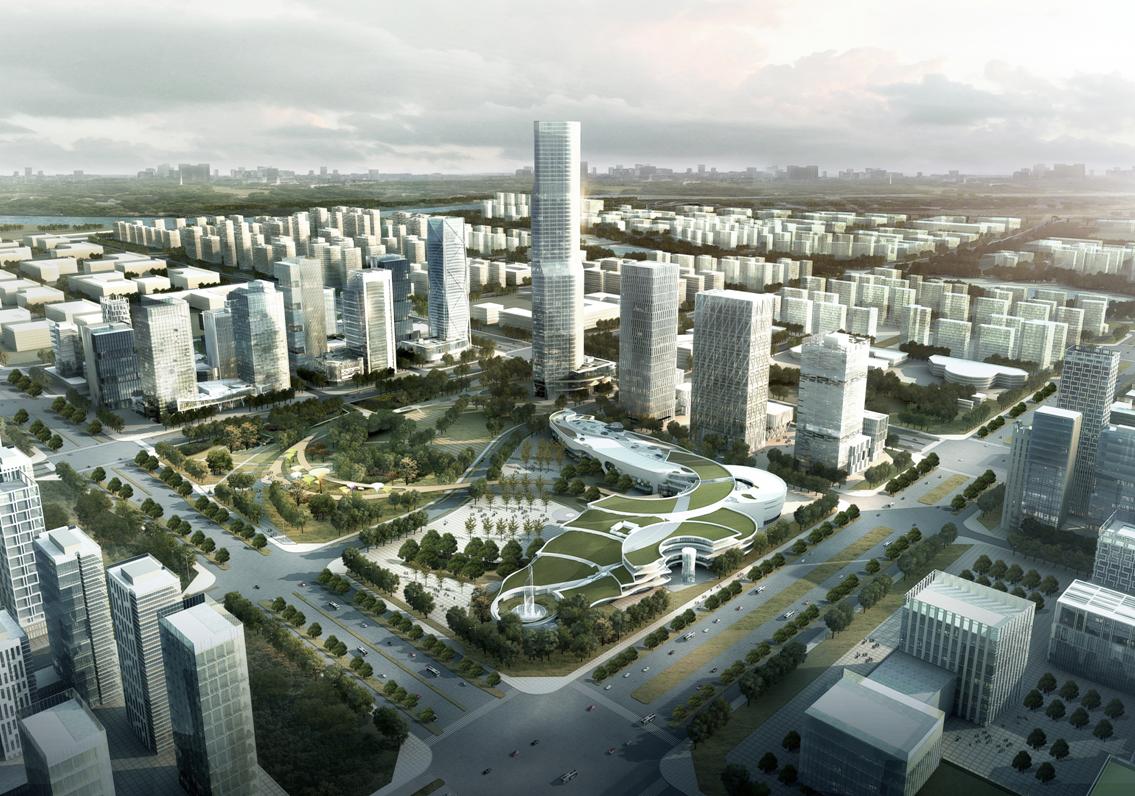
If you ask people in the western hemisphere what they know about Xi’an, they may tell you that this is a city in China, that it was a majestic ancient capital, that it is the home of a large Terracotta Warriors army and that some powerful and megalomanic emperors once ruled there. Avid hikers may boast about climbing a nearby sacred mountain called Hua Shan. But Xi’an of our days, just like China as a whole, is looking for ways to reinventing itself.
Precisely in a place of such historical significance, which is also one of the hallmarks of the Chinese culture, a tremendous effort is made to engineer a city that will be much more than a revolving door for tourists who come, take a few snapshots and more on. Like China as a whole, which is trying to change its role in the world and transform itself from a manufacturing country to one that invents, there, too, resonates the word that sanctifies every technological project in China during the last decade: innovation.
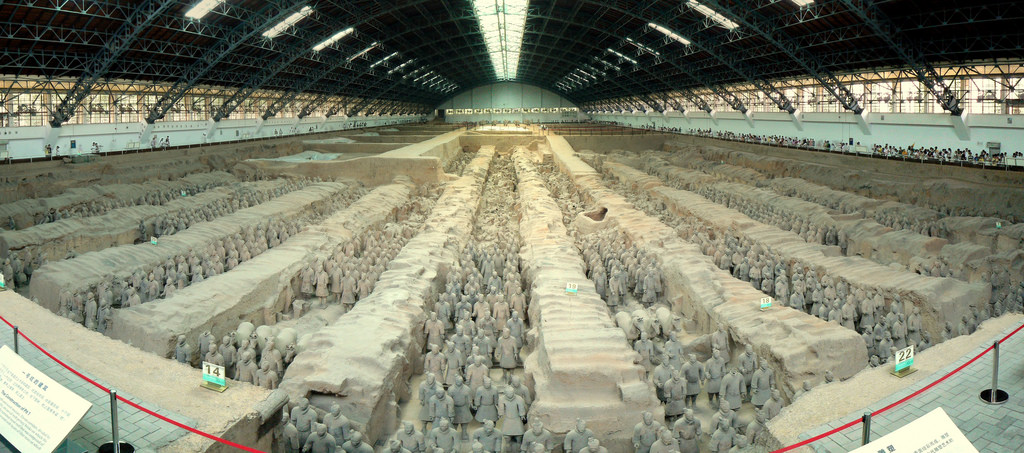
The Terracotta Warriors Army in the archeological site near Xi’an. Photo by Will Clayton
This is why the first significant technological conference held in the city at the end of the previous year was attended by almost anyone who matters: the National Development and Reform Commission, the Ministry of Science, the Ministry of Industry and Information Technology, the Intellectual Property Ministry, the Chinese Academy of Sciences, the Chinese Academy of Engineering, and countless other government organizations. Everyone wants to be associated with those ambitious projects that will position China as a global technological power. Innovation is now part of the national vision, and when China sets goals for itself, it often implements them. The conference was titled “Hard and Core Technology” (硬科技); It is not a catchy term, but it is original and completely made-in-China. It was coined in 2010 by Professor Mi Lei, an expert optician at the Chinese Science Institute of Xi’an, who sought to bind several technological fields under one umbrella heading. Mi Lei, a prominent member in Xi’an’s innovation industry, advocates for the concentration of resources in these fields since he believes China’s it would be China best chances is surpassing other developed countries and win in the competition of dictating the technological trends.
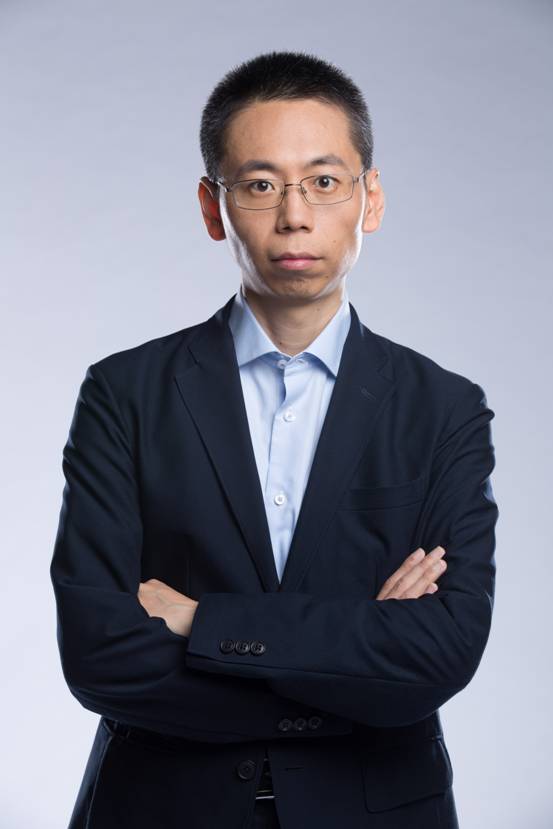
Professor Mi Lei. Coined the term “Hard and Core Technology”
Xi’an was the first stop on the historic Silk Road, and at its peak, it was a prosperous capital and one of the most populous cities in the world. It was called the “City of the Million,” a nickname that attests to its greatness and in particular to the number of its inhabitants. Today, about 20 kilometers west of the city center, a high-tech city is growing rapidly, striving to restore the prosperity and prestige of ancient times. Currently, the place, called Xi-Xian, is a suburban area located in the region that connects Xi’an and nearby Xianyang. Nevertheless, this modest suburb occupies 970,000 residents and by 2020 1.5 million people are expected to live there (and more than 2.7 million by 2030!).
Not a sole example, Xi-Xian is one of seventeen special economic zones in China allocated for economic and technological development, which are supervised directly by the central government in Beijing. These areas are called New Areas (Xin Chu in Chinese) and benefit from generous government investment alongside lenient tax policies. Xi-Xian is considered a relatively young area on the list of those New Areas, but since it received its status in early 2014, it hadn’t stopped growing. For the sake of comparison, the first place announced as a New Area in 1992 is the Pudong district in Shanghai, and today it is one of the most important economic areas in China and the entire world. The New Areas that are developed today are based on a model that combines a high-tech industrial area with urban space, with an emphasis on ecology, education, and culture. Albeit an industrial zone, you can already find elementary schools in Xi-Xian (although some of them were there when the place was merely a “normal” suburb). Xi-Xian is also one of the first sponge cities in China.
“Building high-tech cities is part of a strategic plan to strengthen China’s future generations and define its role in the world,” said Wang Chanlin, vice-president of the China Institute for Macroeconomic Research, who attended the technology conference. “A country driven by innovation will be able to overcome the expected shortage of resources, and that will enable China to continue to grow in the future.” Wang compares the new high-tech cities to the Silicon Valley but says there is still a lot to be done. “Xi-Xian will have research centers, hi-tech companies and special banks that will guide and invest in technology. However, there is still a need to improve the technology itself, especially in the domains of hard and core technology.” Wang also stressed that China should put emphasis on improving project quality rather than concentrate on increasing the number of projects. China registers about one million patents a year, but most of them are not worth much and do not grow into a mature technology or a product. According to him, only the commercialization of scientific research, alongside with cultivating start-ups, will lead to real innovation.
Among the keynote speakers at the conference were distinguished figures such as the head of Shanxi Province (of which Xi’an is the capital), the president of the world’s largest maker of air conditioners, Gree, Nobel Prize laureate in physiology and medicine Edward Moser, and other Chinese technology celebrities. They stole the show, albeit not all of them had an obvious connection to the neologized “hard and core technology” industry. According to Professor Mi Lei, those fields of technology include artificial intelligence, space technology, biotechnology, information technology, materials science, alternative energy, photonic chips, and AI production.
Alongside the main conference, side meetings were attended by government and party executives from all over China. Their goal is to establish large areas devoted to the promotion of innovation, entrepreneurship and technological development, that is, other high-tech cities like Xi-Xian. Those officials represented projects that are, quite deliberately, located on the “New Silk Road” – the ambitious flagship project of President Xi Jinping.
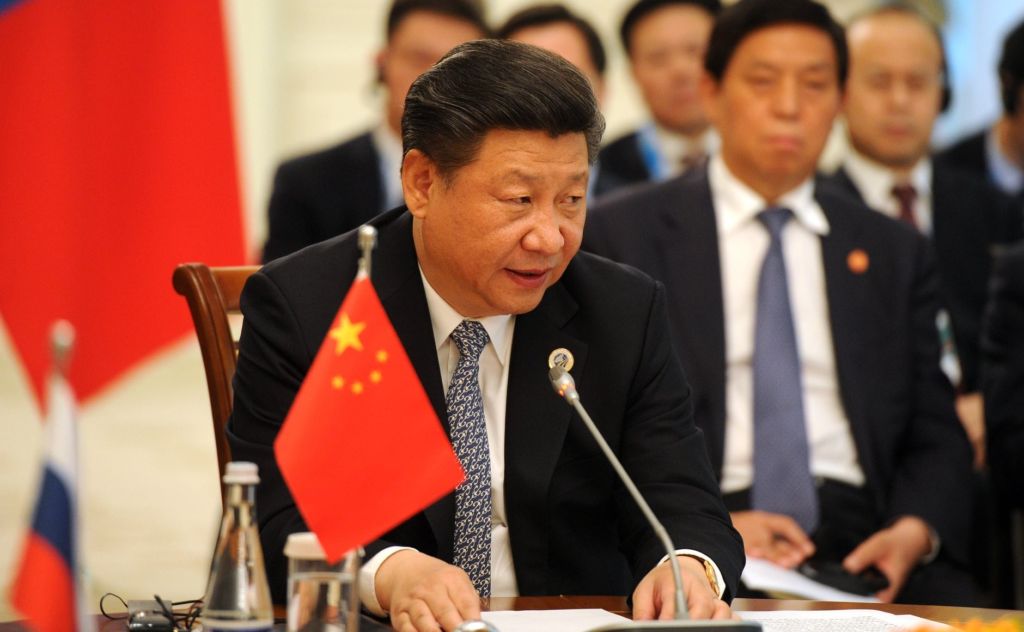
Xi Jingping, Chinese President and the chairman of the communist party.
The New Silk Road, known formally as The Belt and Road Initiative, is President Xi’s master plan aimed at expanding the political and economic influence of China to the west (mainly), by bolstering its infrastructural ties with neighboring and remote countries. The plan is budgeted at trillions of dollars and includes the construction of infrastructures such as roads, seaports, railways and gas pipelines that originate in China and reach as far as Western Europe and Africa. The Asian Infrastructure Investment Bank serves as a major supporter of the infrastructure development that is carried out in the initiative. The bank was established in 2013 by China after a long-standing protest against the IMF and the World Bank, claiming that both are promoting American and European interests while ignoring China’s needs. At the same time, China’s latest five-year plan, issued in 2016, emphasizes international innovation and cooperation, while formulating a policy calling for the abandonment of older industries. This policy received shiny headlines such as “Made in China 2025” or “Initiatives for All, Creativity for the Masses.”
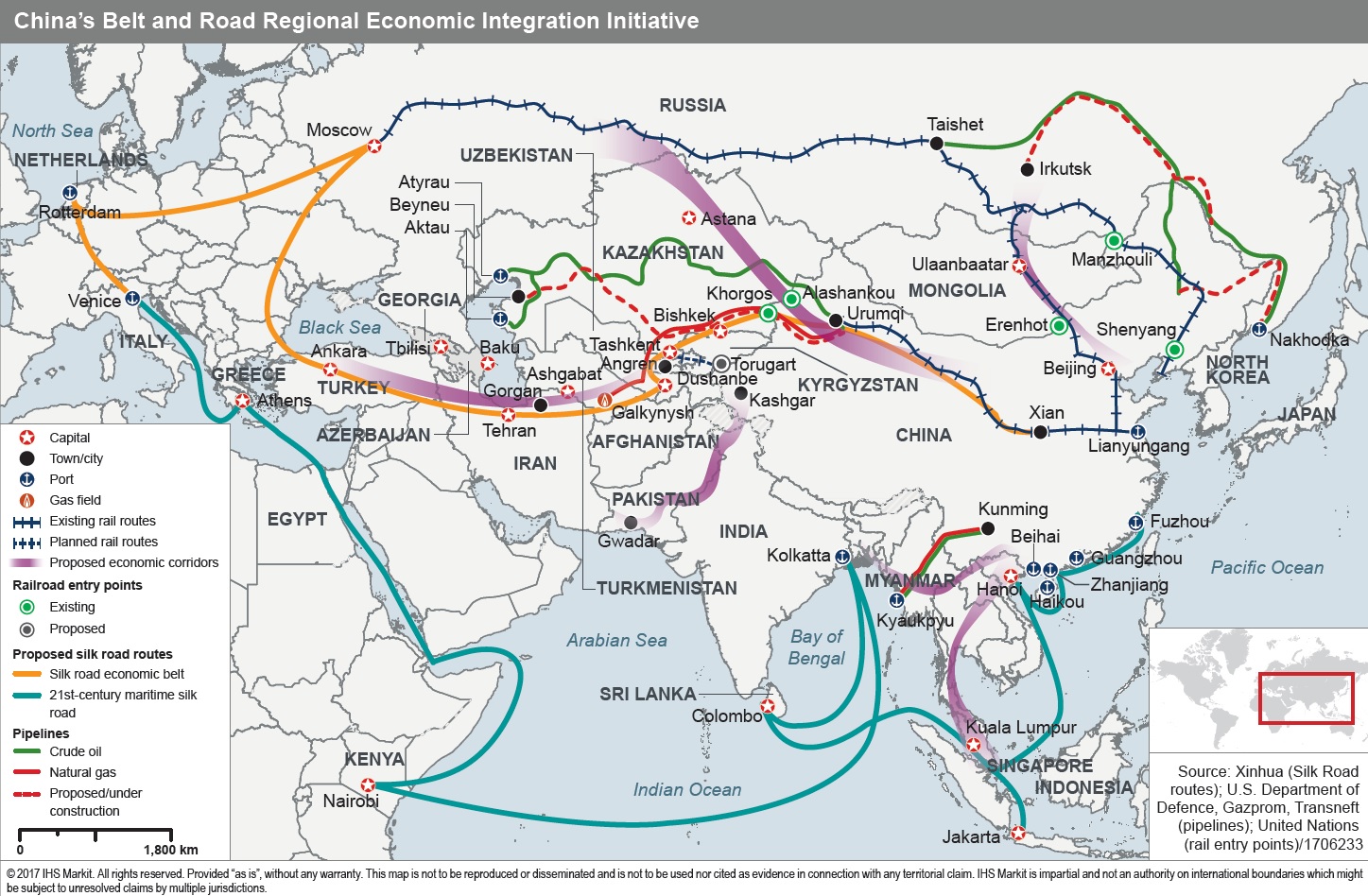
“Belt and Road” general plan mapped
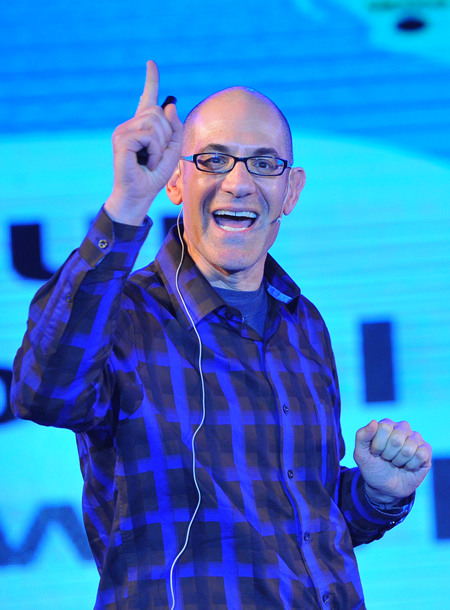
Steve Hoffman, founder of Founder’s Space
Steve Hoffman, a well-known Silicon Valley investor and founder of Founders Space, start operating in China more than three years ago. He came to China upon an invitation without any expectations, but that visit changed everything, and after recognizing the possibilities he decided to develop his business in China. The Chinese start-up industry is mainly concentrated in Shanghai, Beijing, and Wuhan, and is developing rapidly in Chengdu and Shenzhen. Hoffman, also one of the keynote speakers in the convention, says that Xi’an is also starting to build its reputation, but the general comparison between China’s high-tech cities and Silicon Valley should be done with caution. “These cities are uniquely Chinese. Silicon Valley evolved organically over 50 years, while these hi-tech cities sprout up in just a few years. They are planned and supported by the government. Our (American, Y.V.) government takes a hands-off approach, which may wind up hurting us in the long run. China is taking bold steps to foster and promote innovation across its entire economy. Five or ten years from now, this type of investment will pay for itself in increased growth,” he says, and notes that Silicon Valley has been for decades abundant with entrepreneurs, business leaders, government institutions, universities, corporations, and research centers. The evolved networking between those entities is a key factor as well in its success. Hoffman does not believe that Xi’an will become the next Silicon Vally, but optimistic about the possibility of it becoming, with the right planning and support, a hub of innovation like Hangzhou or Shenzhen.
Some voices are slightly more skeptical about the likelihood of China’s hi-tech cities to succeed, particularly in the context of sparkling technological parks that seem to have been taken straight out of a box. Just like China’s ghost cities, these areas are impressive yet tremendously less vital than the government had expected. The goal of the local authorities in the provinces is to satisfy the direction given by the central government, namely to encourage innovation, and their strategy is to do what China has been doing best for 30 years – to build. The existence of many technological parks stems primarily from incentives given to real estate companies, and does not represent a real need that comes from an inclination of technology companies to operate in these areas. This drives the local government to actively court after companies to come and populate those parks in order to justify its operation, as well as the funds that flow from Beijing to support it.
“If you build it, they will come,” says the famous quote. This is what Ophir Gore, The Economic attaché at the Embassy of Israel in Beijing, attributes to the Chinese paradigm and the motivation behind building the hi-tech cities. In an article he published, Gore points out that the Chinese expectation is that talent both from home and abroad will flow into technological parks simply because they are there. Gore says that his office receives countless requests from such technological parks asking to bring Israeli companies to China, however this unfortunately not a viable incentive for most high-tech companies in Israel. “An Israeli company that accepts an offer to open offices in a certain place in China, which still lacks activity in a proper volume, needs to think carefully before embarking on such an adventure,” he explains. The experienced attaché elaborates about the situations in which he would recommend companies to come and settle in China: either in the case that the foreign company is already connected to local businesses in the technological area and wins specific projects (and receives advances) or in case that the company receives investment from a fund belonging to the technological area. In the broad sense, Gore praises what China is doing to become an innovative country, and says that we can even learn something. “China is becoming increasingly innovative. So far, it has been mainly in business models and not much in disruptive technology, although it seems that in quite a few areas, such as FinTech, shared economy, and AI, they are already beginning to take the lead, and in some fields, such as in artificial intelligence, the technology has already become disruptive. I believe that China is going to excel. The Chinese are smart and talented, and there is a lot of money in China dedicated to investment in technology.”
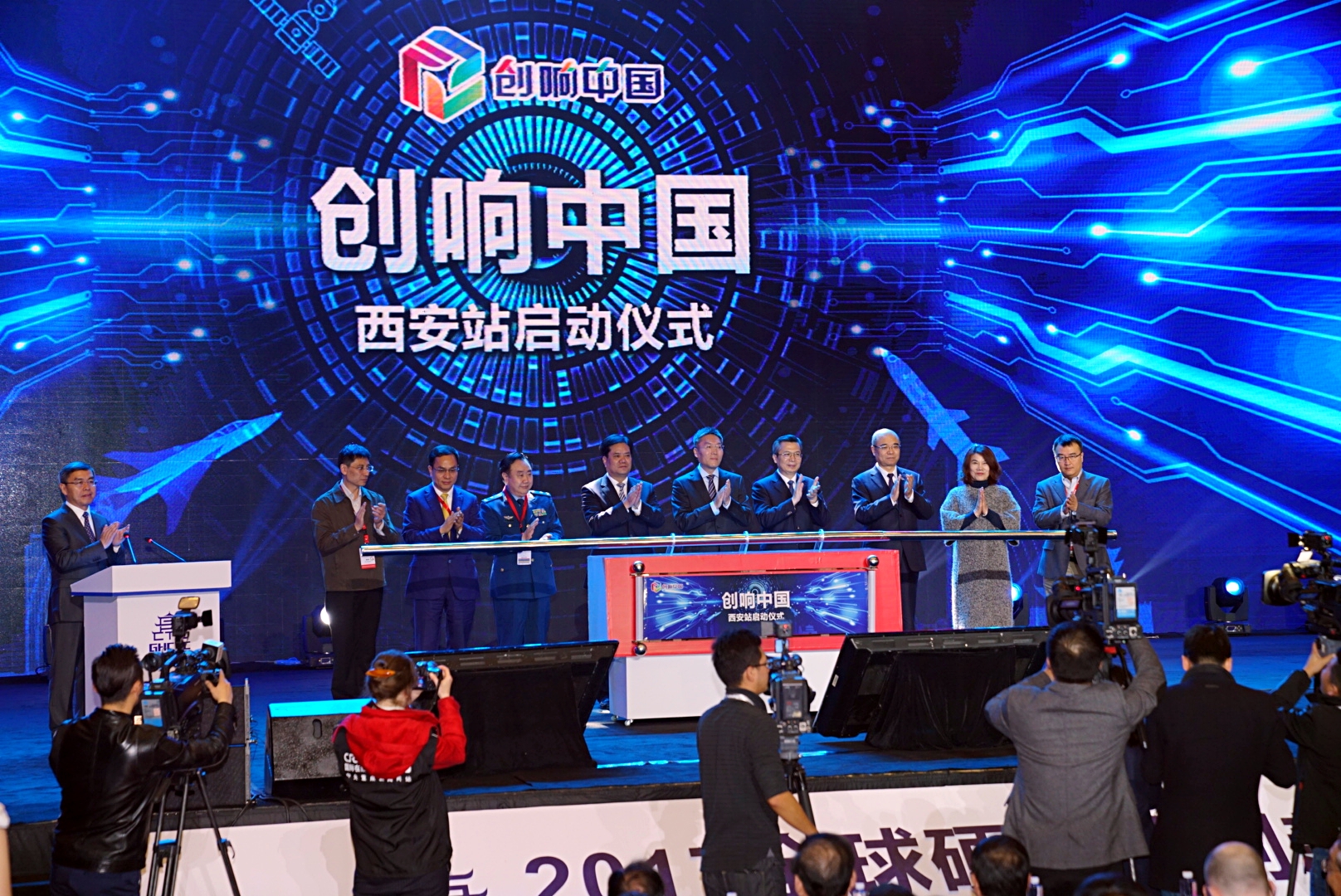
Keynote speakers panel at Hard and Core Technology convention.
As Prof. Mi Lei sees it, the technology that will enable China to become a leader in world innovation must be both original as well as such that will provide a profound contribution to society and humanity. “Hard and Core Technology is a concept that combines areas that require substantial development, while still implemented very quickly in different industries.” He explains. He sees a grand future for China’s hi-tech cities and recounts that in recent years, headhunters from companies such as Samsung, Microsoft, DJI and ZTE have constantly been coming to the Xi’an for recruiting fresh graduates. “Xi’an and its universities are taking the same path that Silicon Valley and Stanford have. Today Xi-Xian is only a suburb, but in the future, it will affect the city in many ways, all thanks to the human capital that will come here. ” When asked how he regards China in the competition with the West, Professor Mi says that China still needs to position itself and prove its supremacy in the world arena, and concludes with a suitable quote from Xi Jinping from one of his visits in Xi’an: “There are many kinds of innovation, but technology is the root of success.”
This article was originally published in Hebrew on ynet on 24/02/2018.